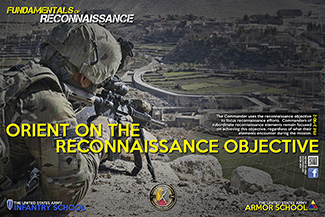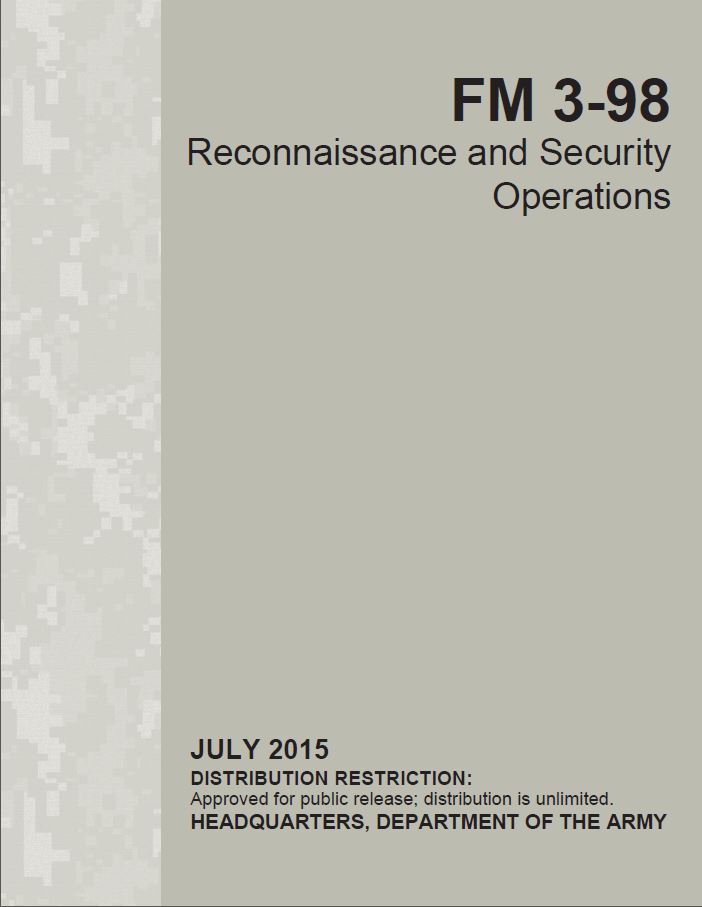ORIENT ON THE RECONNAISSANCE OBJECTIVE
The commander uses the reconnaissance objective to focus reconnaissance efforts. Commanders of subordinate reconnaissance elements remain focused on achieving this objective, regardless of what their elements encounter during the mission. When time, unit limitations, or enemy action prevents a unit from accomplishing all the tasks normally associated with a particular form of reconnaissance, the unit uses the reconnaissance objective to focus the reconnaissance effort.
The Battle of Perryville
Era: Civil War 1862
The summer of 1862 witnessed a Confederate invasion of Kentucky. The military operations sought to encourage the commonwealth to secede from the Union. By late September, Southern forces had defeated decisively the Union Army of Kentucky, captured the state capital at Frankfurt, and dispatched cavalry to threaten Louisville and Cincinnati. While General Braxton Bragg focused his efforts upon installing a pro-Confederate state government, Union General Don Carlos Buell withdrew his army from Tennessee and retired to Louisville. Reinforced by newly created regiments, on 1 October he commenced operations intended to destroy the Confederate presence in Kentucky.
Buell moved the three corps of his Army of the Ohio on separate roads that converged upon Bardstown, where much of Bragg’s army was located. A fourth Union force conducted a feint toward Frankfurt. Each of these columns benefited from a screen of cavalry, which overwhelmed Confederate cavalry pickets intended to give early warning of Buell’s advance. Indeed, the US cavalry aggressively sought to engage its counterparts in battle, forcing the dispersed and outnumbered Confederate cavalry to retire rather than risk defeat. These actions kept Southern troopers from accurately determining Buell’s intent or dispositions. Instead, Bragg mistakenly assumed the Union feint toward Frankfurt constituted Buell’s main effort.
Fundamentals of Security: Orient on the force or facility to be secured
- Union cavalry effectively kept itself between Confederated mounted units and the various US infantry columns. In doing so, it kept the Southern cavalry from accurately assessing the strength and intent of each column.
Fundamentals of Security: Maintain enemy contact
- By aggressively seeking out Confederate cavalry encountered, the US mounted troops maintained contact with the enemy, threatened him with combat action, and disrupted his reconnaissance effort.
By the evening of 4 October, Buell’s infantry columns had reached Bardstown, shortly after Bragg’s army evacuated the town. US cavalry screening the feint toward Frankfurt skirmished with Confederate mounted troops just miles from the state capital. The presence of Union soldiers so close to Frankfurt prompted the Confederates to abandon the capital, undermining the credibility of their newly inaugurated state governor. Bragg relocated his headquarters to Harrodsburg where he now sought to concentrate all Confederate forces in the state. He suffered from an acute lack of accurate information concerning Buell’s intent and movements that reflected his cavalry’s inability to conduct effective reconnaissance.
The bulk of Bragg’s cavalry was concentrated in two brigades commanded by Colonels John A. Wharton and Joseph Wheeler. They formed a screen line covering the main roads leading out of Louisville intended to provide an early warning should Buell leave the city. Unfortunately, when the Union columns did move out of the city, Confederate cavalry neither delayed their advance nor provided accurate information upon their strength or likely destination. The aggressive action of Buell’s cavalry forced the continuous retreat of Wharton and Wheeler without securing information on Union dispositions.
Fundamentals of Security: Provide early and accurate warning
- Despite their forward location, the brigades of Wheeler and Wharton failed to provide Bragg an early or accurate warning of Buell’s movement. In the absence of timely and accurate information, Bragg assumed the Union feint to Frankfurt constituted Buell’s main effort.
Between 5 and 7 October Confederate infantry and artillery withdrew from Bardstown toward Springfield and Perryville. Their retreat was covered by Wheeler’s cavalry brigade. Acting as a rearguard, his command skirmished continuously with Union cavalry. In this role, Wheeler’s cavalry performed well, ensuring that the protected infantry columns were not overrun. However, Wheeler’s command sent few reports detailing enemy forces. His focus lay in fighting the enemy through a series of delaying actions rather than seeking to discern their strength and intent. What reports were sent were channeled through subordinate commanders, delaying their receipt by the Army commander. Wharton might have been able to provide more information, but at this critical juncture, he was dispatched to a remote location to protect against a nonexistent threat. Outside Frankfurt Confederate cavalry sent a series of conflicting reports concerning Union strength and intentions. Hence, despite the continuous movement of nearly 100,000 opposing soldiers in central Kentucky and daily skirmishes with Union soldiers, Bragg’s intelligence amounted to little more than vague impressions of enemy activity.
Fundamentals of Security: Orient on the force or facility to be secured
- Wheeler’s cavalry effectively protected the retreating Confederate columns as they retired from Bardstown to Perryville by operating between the marching units and the pursuing Union forces.
- However the dispatch of Wharton’s cavalry brigade away to cover against a nonexistent threat is an example of a security force NOT orienting upon the force to be secured.
Fundamentals of Security: Perform continuous reconnaissance
- Confederate cavalry failed to secure a steady stream of information concerning Buell’s actions and main effort. This failure resulted in Bragg attempting to maneuver his army with little knowledge of Union dispositions or intent.
Fundamentals of Security: Maintain enemy contact
- Wheeler’s daily skirmishes and delaying tactics ensured he retained continuous contact with Union forces. Ironically, despite this contact, he failed to provide an accurate picture of Buell’s actions and intent.
Determined to regain the initiative and faced with an unclear picture of enemy intent, Bragg ordered an attack on 8 October. Those Confederate forces that had retired to Perryville were now directed to assault their pursuers, assisted by other forces in the vicinity. Afterward all Confederate formations in Kentucky would launch a unified effort to retake the state’s capital of Frankfurt. The order to attack at Perryville sent 17,000 Confederates to attack Buell’s main army of 58,000. It reflected the failure of Confederate reconnaissance, resulting in the army commander, Bragg, making assumptions about Buell’s intent that proved very wrong.
Elements of Buell’s army arrived at Perryville on the evening of 7 October. Delays in the transmission of orders and the need for subordinate formations to deviate from their line of march to find water prevented a consolidated strike against the Confederates. While Buell concentrated his forces in preparation for an attack, Bragg struck first on 8 October. Believing he faced only a small Union force, Bragg planned a flanking thrust to roll up Buell’s forces. Critical to the success of this plan lay the determination of the Union left flank. Bragg employed COL Wharton’s cavalry brigade—now returned to the army—to both clear enemy skirmishers from his line of advance and to confirm the location of Buell’s flank. Wharton’s troopers forced the Union skirmishers to withdraw but retired in turn when fired upon by Union artillery. His departure prevented him from observing the arrival and deployment of Brigadier General William R. Terrill’s brigade, which occupied a key hill position that extended the Union line further north. Unaware of this development, the Confederate attack proceeded as planned. However, instead of attacking an open flank, Bragg’s soldiers now thrust into the center of the US I Corps. The presence of Terrill came as an unwelcome surprise to the Confederates, and forced the premature deployment of reserves to attack Terrill’s position. Moreover, the changed situation resulted in Bragg’s soldiers launching a series of costly frontal assaults over rolling terrain instead of enveloping the Union force. Exhaustion, casualties, and nightfall ended the battle before Bragg could achieve the decisive result desired.
Fundamentals of Reconnaissance: Gain and Maintain Enemy Contact
- Wharton did not maintain enemy contact and failed to note arrival of new Union units whose deployment resulted in the Confederates launching a frontal assault into the center of the US I Corps rather than rolling it up as planned.
While the main Confederate attack occurred on the right, Colonel Joseph Wheeler’s brigade screened the army’s left flank. Throughout much of the day, Wheeler engaged in skirmishing actions with the US II Corps, which alone outnumbered Bragg’s entire army at Perryville. It posed a significant threat to the Confederates, but Wheeler did not report its presence until after the bulk of Bragg’s forces had been committed to combat. Fortunately for Bragg, the absence of clear orders to advance kept II Corps inactive.
Fundamentals of Security: Provide early and accurate warning
- Wheeler failed to report the presence of the US II Corps immediately upon contact, instead waiting until after Bragg had committed his army to battle
Fundamentals of Security: Provide reaction time and maneuver space
- Wheeler’s belated reporting a large concentration of Union soldiers on Bragg’s left flank until after nearly all of the Confederate forces had been committed to battle left the army commander little opportunity to respond to the new threat. Under more aggressive Union leadership, this situation might well have become a disaster for the Confederates at Perryville.
The final testament to the failure of Confederate reconnaissance occurred after nightfall and the cessation of fighting. Only then did Bragg’s staff finally learn from prisoners and examination of the dead that they had been fighting Buell’s entire army. This information triggered an immediate withdrawal from the battlefield. While the Confederates secured a tactical victory, they had done so at considerable cost in lives and by employing their entire force. Buell, despite the reverses suffered by I Corps, retained two additional corps in good condition and lay poised to eliminate Bragg’s army should it remain in place. In short, a series of reconnaissance failures resulted in Bragg initiating combat without realizing the high risk of defeat and destruction. Only a series of command failures on the part of Buell’s army enabled the Confederates to escape the field intact.
The Union senior commanders at Perryville proved largely unable to act on their own initiative, waiting instead for guidance from Buell that never arrived. Buell, injured the day before, remained incapacitated at his headquarters. His knowledge of the battle’s onset and its flow depended entirely upon subordinates keeping him informed, especially since a combination of atmospheric conditions and terrain known as acoustic shadow shielded his headquarters from the sound of battle. To facilitate communication, Buell established signal posts between his army headquarters and his subordinate corps headquarters. However, when the US I Corps came under attack, this communications network was not used to alert the army commander. Nor were couriers dispatched to Buell until late in the day, leaving little time to react and influence the fight. Consequently, the I Corps fought by itself with little support from the other two Union corps present, even though each of these other corps outnumbered Bragg’s entire force. Instead, those formation commanders waited for orders from their army commander, which arrived too late to alter the course of battle.
Fundamentals of Security: Provide early and accurate warning
- When the Confederates opened their attack at Perryville, there was no immediate effort by the US I Corps to alert the army commander, despite the signal stations established to speed and facilitate communication.
Fundamentals of Security: Provide reaction time and maneuver space
- The failure to alert Buell of the Confederate attack in a timely fashion prevented the army commander from issuing orders for coordinated action among his corps commanders. Instead the three-to-one advantage of the Union army was wasted and an opportunity to defeat Bragg’s army lost. Consequently, the US I Corps fought a largely unsupported action at considerable cost in lives.


